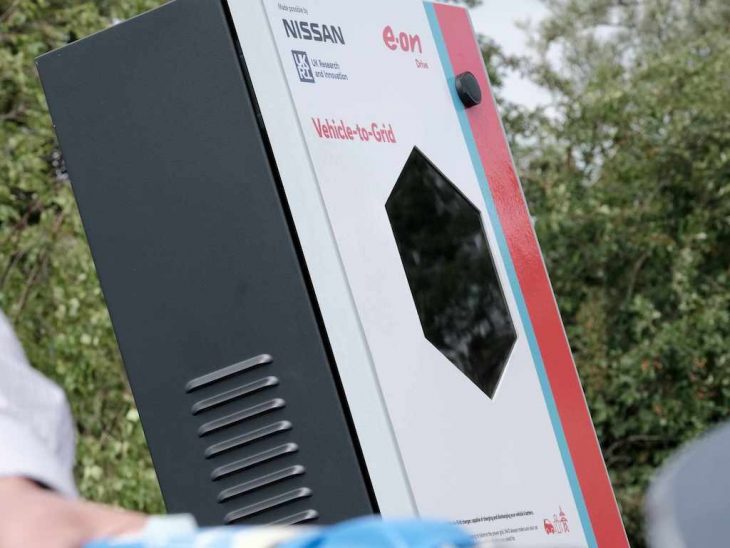Fleets are being invited to sign up to the next stage of a vehicle-to-grid (V2G) project that could bring them extra revenues as well as supporting the power grid.
Run by a consortium that includes Nissan and E.ON, the trial shows how electric vans and cars could play a role in supporting the UK grid and providing a profitable and sustainable solution for business fleets.
Nissan and E.ON have already successfully deployed 20 vehicle-to-grid (V2G) chargers at Nissan’s European Technical Centre in Cranfield as part of the trial, demonstrating how the technology can be used to enable energy stored in electric vehicle batteries to be sold back to the grid when demand for power is high. Vehicles can then charge when demand is lower or renewable generation is high.
But as well as being able to generate revenues and cut costs on EV charging, fleets taking part in the trial will benefit from access to a heavily subsidised V2G package, thanks to grant funding made available through Innovate UK. Vehicles compatible with the technology being used in this project are currently the Nissan e-NV200 and the Nissan Leaf.
It’s not just fleets who will benefit from V2G either; the technology has a major role in addressing the UK’s energy storage challenge, enabling the switch to wind and solar electricity generation instead of fossil fuels and also facilitating drivers’ migration to EVs. As such, it’s vastly important in carbon reduction efforts.
The V2G platform used on the trial utilises a combination of E.ON’s existing Virtual Power Plant software as well as a charger operating system provided by E.ON’s e-mobility partner Virta.
Luke Ellis, V2G programme manager with E.ON UK, outlined how V2G tech can optimise existing electric vehicle benefits: “Operating an electric fleet means already contributing to the net zero emissions target and saving money through local clean air zone exemptions; integrating your fleet with V2G technology brings greater cost savings and the chance to earn extra revenue. Fleet vehicles which sit idle overnight, or even during the working day, could see their batteries charged when demand is low, with the energy exported when demand is high, but still be charged and ready for use when required.
”V2G technology brings with it wider environmental benefits for society as a whole. It can be considered ‘carbon negative’ for its potential to reduce or even remove the need for fossil-fuelled generation to be fired up at times of peak electricity demand.”
Peter McDonald, fleet director at Nissan Motor GB, highlighted how many fleets are now looking at wider electric vehicle opportunities alongside procurement.
“We know many fleets are not just looking at electric vehicle acquisition, they are also reviewing their energy infrastructure for a world where electric vehicles are fast becoming the norm,” he commented. “Nissan is collaborating with E.ON on this exciting energy infrastructure project to expedite V2G technology in the UK. Thanks to the Leaf and e-NV200 being V2G-capable, these EVs are well set for the future.”
To find out more about the project and how to get involved, click here.











































